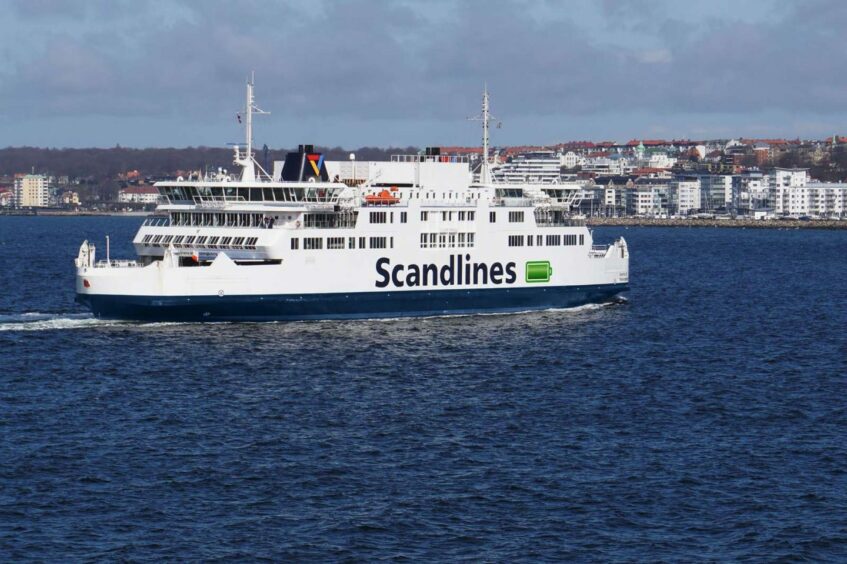
Global merchant shipping electrification is poised to take off with the cost and reliability of battery technologies at last becoming acceptable.
According to an analysis by the maritime investment banking arm of Clarkson Group published in November, of the more than 400,000 commercial vessels around the world today, only 575 or so are currently fitted with electric and hybrid propulsion systems.
Compared with the still very modest advances made with onshore logistics, maritime’s track record thus far has been lamentable.
But Clarksons Securities report that the number of electric and hybrid vessels is set to “increase exponentially” with orderbooks for new, greener ships at last starting to swell rapidly.
“As demand to reduce emissions from shipping accelerates, the utilisation of batteries has proven to be both a functional and commercial solution for short-distance, high frequency vessels, with its application into larger vessel classes growing,” says Clarksons.
“Trends in maritime batteries and current technological readiness suggests there will soon be a dramatic uptake in electrification thanks to its ability to delivery strong commercial value while also reducing GHG emissions.”
According to Canadian energy storage systems specialist (ESS) Shift Clean Energy, “more than 80% of new-builds are now being designed with ESS and we are seeing vessel demos (demonstrations) replaced with fleet rollouts”.
CEO Brent Perry said: “Here at Shift, we have seen incredible growth in recent years because of two fundamental elements.
“Firstly, we deliver financial payback to clients, usually at around the three-year mark, meaning clients are in a position to make money doing something innovative.
“And secondly, the GHG reductions which our technology makes possible is steering clients towards futureproofing their fleets in line with the industry’s 2030 and 2050 goals.”
Clarksons reports that Perry believes the maritime market only recently reached the tipping point in preparing to and adopting battery technology globally, for example.
Projects such as Aurora, the world’s largest battery ferry, have helped to highlight battery technology as a commercially viable option.”
Built in 1991, this ship was retrofitted with 640 batteries by Shift Clean Energy in 2017.
It operates a 4km route between Sweden and Demark and carries 7million passengers, 1.3million cars and 450,000 trucks per year, and is now 100% carbon-free, saving 1.56 million tonnes of GHG emissions per year.
Meanwhile, today, there are at least 203 shipping decarbonisation pilot and demonstration projects in the pipeline.
Research at Southampton University published two years ago and which still has value as a reference point said that the case for battery-electric and hybrid vessels had already been made.
“Even with today’s batteries, which have yet to achieve the affordability and performance to create mass appeal of electric cars, the business case is favourable for marine applications,” says the Southampton study.
“Batteries are getting cheaper and better faster than other technologies such as fuel cells, and consequently where the range of boats is short enough to allow battery-electric operation, fuel cells are not expected to compete.”
“For longer journeys, hybrid systems allow 15-30% savings by allowing the battery to handle all types of fluctuating loads. This advantage will be maintained regardless of the choice of future fuel due to the inherent part load inefficiency of power converters.
“The simplified picture of battery progress is this: today’s lithium ion will be superseded by solid-state lithium in the next ten years, and by metal-air in some timeframe probably greater than 15 years from now.”
But decarbonisation of the marine sector remains only tenuously on course with its decarbonisation voyage and remains massively dependent on burning heavy oil fuel oil (HFO).
LNG is seen as the primary transition fuel of choice, though the war in Ukraine and rapidly increasing global competition for liquified natural gas may hamper progress in that quarter.
According to research from the University of California – Berkeley, ships collectively transport 11 billion tonnes of cargoes annually, handling nearly 90% of global trade by mass.
The industry consumes 3.5 million barrels of low-grade HFO annually, produced 2.5% of total CO2 equivalent emissions in 2018.
Environmental collaterals include enormous damages such as marine eutrophication and ecotoxicity, air pollution, and climate change impacts.
Big ship alternatives remain elusive though ammonia and hydrogen are possibilities.
If drastic action isn’t taken then, by 2050, maritime shipping emissions are projected to contribute as much as 17% of global CO2e emissions.
Recommended for you
